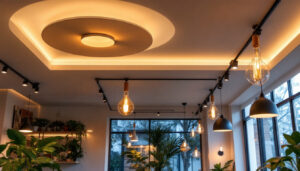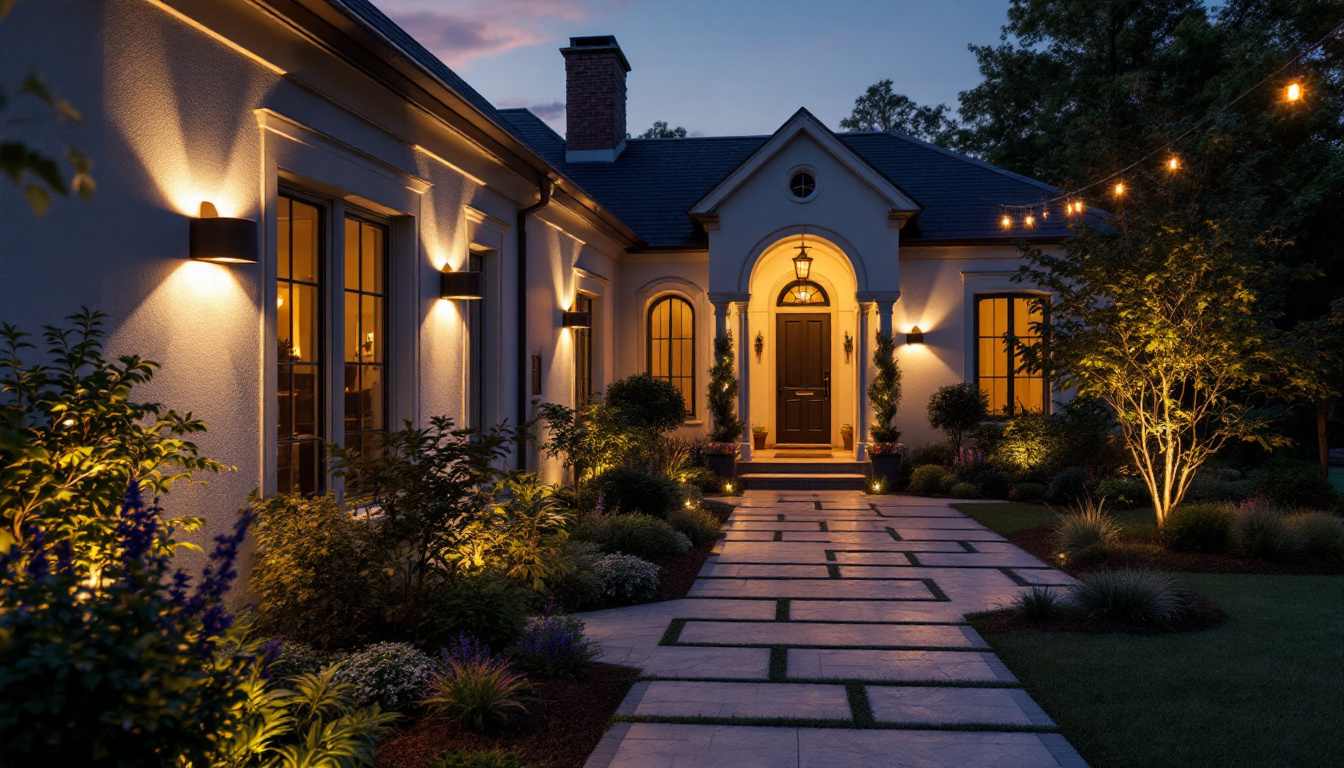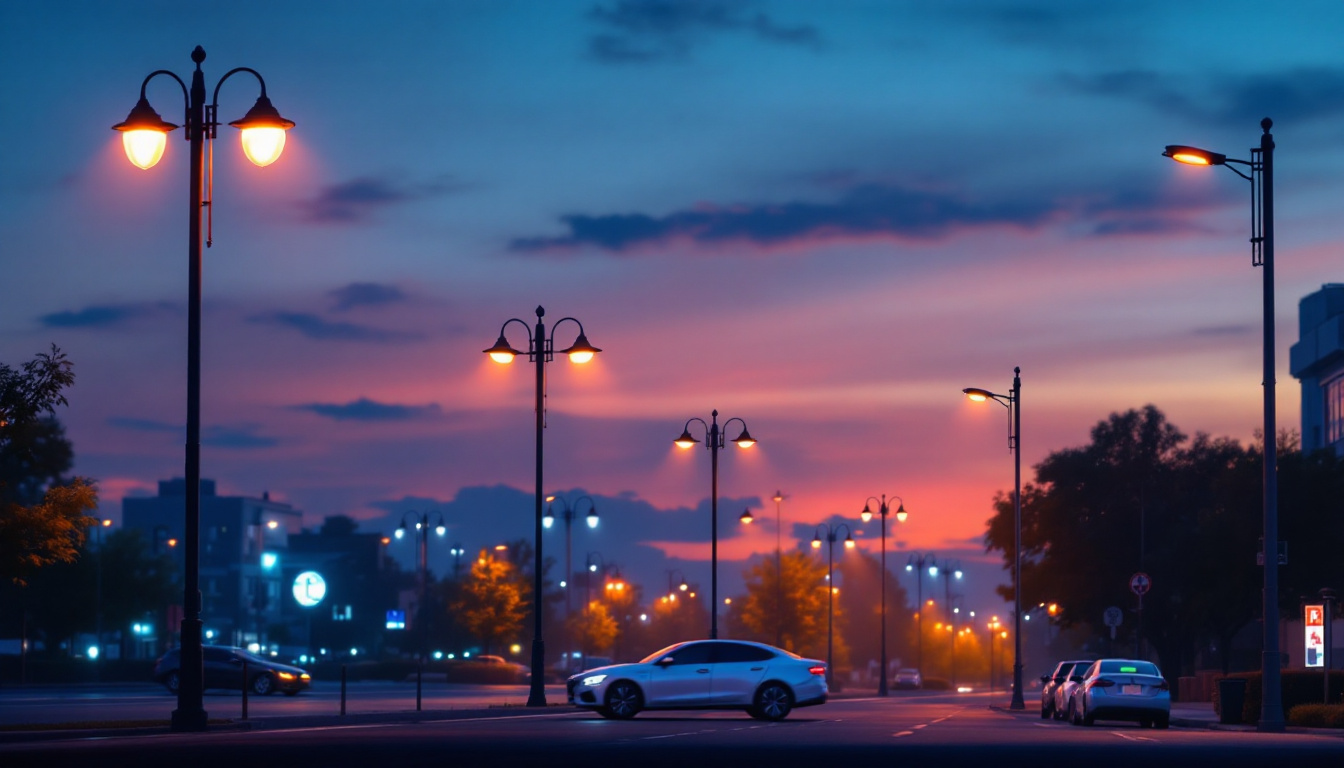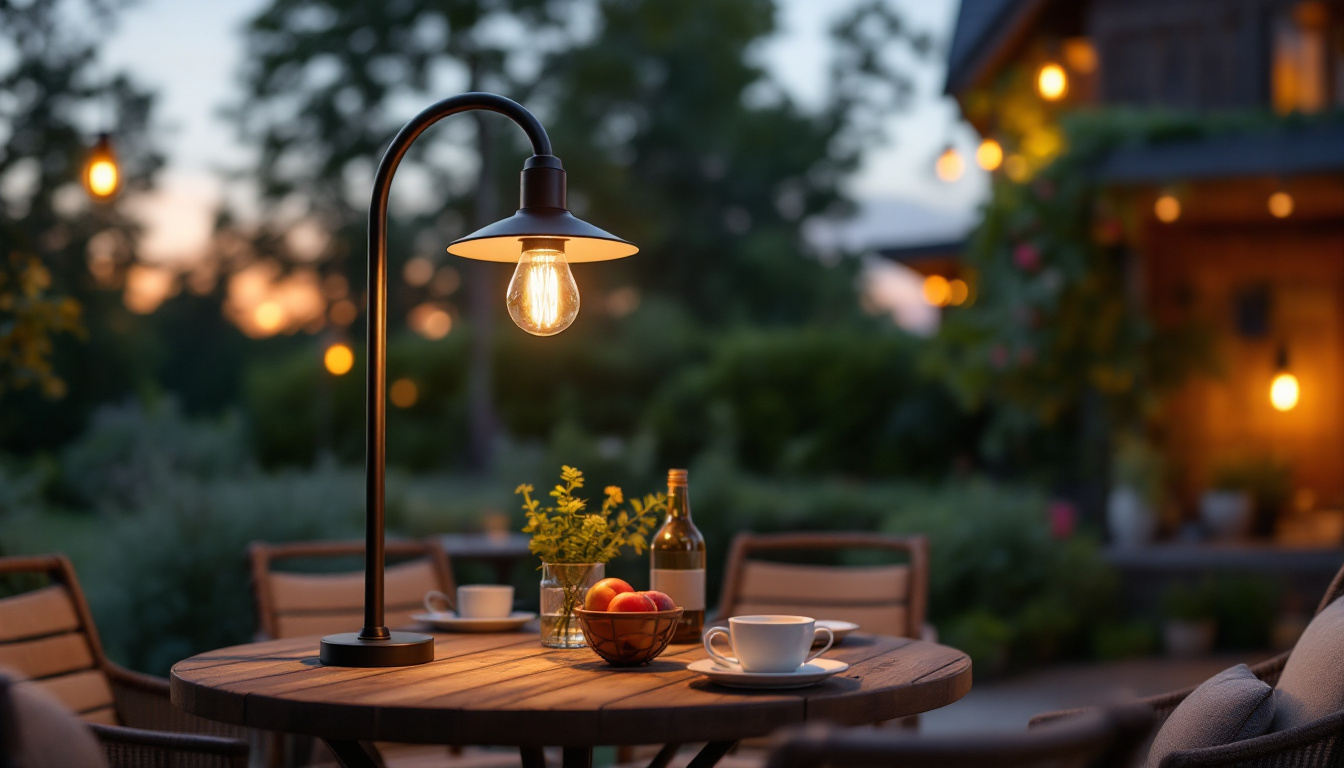

As lighting contractors, understanding the nuances of outdoor lighting is crucial for delivering exceptional results to your clients. Outdoor lighting not only enhances the aesthetic appeal of a home but also provides safety and security. This article will explore various types of outdoor lights, their applications, and key considerations for installation. Whether you are a seasoned professional or just starting, these insights will help you elevate your outdoor lighting projects.
Outdoor lighting comes in various forms, each serving distinct purposes. Familiarizing yourself with these types will enable you to recommend the best solutions for your clients’ needs.
Pathway lights are essential for illuminating walkways, driveways, and garden paths. They not only guide visitors safely but also enhance the landscape’s beauty. Available in various styles, from solar-powered fixtures to low-voltage options, these lights can be strategically placed to create a welcoming ambiance.
When installing pathway lights, consider the spacing and height to ensure adequate illumination without causing glare. Additionally, using LED bulbs can provide energy efficiency and longevity, making them an attractive option for homeowners. To further enhance the visual appeal, consider using colored or decorative lens covers that can cast interesting shadows and patterns on the ground, adding an artistic touch to the outdoor space.
Flood lights are powerful fixtures designed to illuminate large areas. They are ideal for highlighting architectural features, security purposes, or illuminating backyards and patios. With adjustable beams and varying brightness levels, flood lights can be tailored to meet specific lighting needs.
When selecting flood lights, consider their placement carefully. Positioning them too high can create shadows, while too low may not provide sufficient coverage. Additionally, incorporating motion sensors can enhance security while conserving energy. For a more dynamic lighting effect, consider using flood lights with color-changing capabilities, allowing homeowners to switch between different hues for various occasions or moods, such as festive gatherings or quiet evenings under the stars.
Wall sconces add a touch of elegance to outdoor spaces. They can be used to light up entryways, patios, or decks, creating a warm and inviting atmosphere. Available in various designs, these fixtures can complement the architectural style of the home.
When choosing wall sconces, it’s essential to consider the height at which they are installed. Typically, they should be mounted at eye level to provide optimal illumination without being overpowering. Using dimmable options can also allow homeowners to adjust the ambiance as needed. Furthermore, selecting sconces with weather-resistant materials ensures durability against the elements, while those with built-in LED technology can significantly reduce energy consumption and maintenance costs over time. For an added layer of sophistication, consider sconces that feature intricate designs or artistic glasswork, which can serve as both functional lighting and decorative art pieces in the outdoor setting.
When it comes to outdoor lighting, several factors must be taken into account to ensure a successful installation. Understanding these considerations will help you deliver high-quality results that meet your clients’ expectations.
With growing concerns about energy consumption and environmental impact, energy-efficient lighting solutions are more important than ever. LED lights have become the go-to choice for outdoor lighting due to their low energy usage and long lifespan.
Encouraging clients to invest in energy-efficient options not only reduces their utility bills but also aligns with sustainable practices. Additionally, consider incorporating smart lighting systems that allow homeowners to control their outdoor lights remotely, further enhancing energy savings. These systems can be programmed to adjust brightness based on the time of day or even respond to motion, ensuring that lights are only on when needed, which can significantly contribute to energy conservation.
Outdoor lighting fixtures must withstand various weather conditions, from rain to extreme temperatures. When selecting fixtures, look for those rated for outdoor use, ensuring they are made from durable materials that resist rust and corrosion.
Furthermore, consider the installation location. Fixtures placed in sheltered areas may require less weatherproofing than those exposed to the elements. Providing clients with maintenance tips can also extend the life of their outdoor lighting systems. For instance, advising them to regularly clean their fixtures and check for any signs of wear can prevent costly replacements down the line. Additionally, using fixtures with built-in protection against UV rays can help maintain their appearance and functionality over time.
While functionality is essential, the aesthetic appeal of outdoor lighting should not be overlooked. The right fixtures can enhance the architectural features of a home and create a cohesive outdoor space.
Encourage clients to think about the overall design of their landscape when selecting lighting. Options like decorative lanterns or modern minimalist designs can elevate the visual impact of the property. Additionally, using warm color temperatures can create a welcoming atmosphere, while cooler tones can lend a more contemporary feel. It’s also beneficial to explore various lighting techniques, such as uplighting to highlight trees or downlighting to mimic natural moonlight, which can add depth and dimension to outdoor areas. By thoughtfully layering different types of lighting, clients can create a dynamic environment that transforms their outdoor spaces into inviting retreats, perfect for entertaining or relaxing under the stars.
Utilizing various lighting techniques can significantly enhance the beauty and functionality of outdoor spaces. As a lighting contractor, mastering these techniques will set you apart from the competition.
Uplighting involves placing lights at the base of trees, shrubs, or architectural features, directing the light upward. This technique creates dramatic effects, highlighting the textures and shapes of the objects being illuminated.
When implementing uplighting, consider the angle and intensity of the light. Soft, diffused light can create a subtle glow, while brighter lights can produce striking shadows. Experimenting with different placements can yield unique results and enhance the overall landscape design. Additionally, using energy-efficient LED fixtures can not only reduce electricity costs but also minimize heat output, making them a safer option for illuminating delicate plants and outdoor furniture.
Downlighting, or moonlighting, mimics natural light by placing fixtures high above and directing light downward. This technique is perfect for creating a soft, inviting atmosphere in outdoor living spaces.
When using downlighting, consider the height of the fixtures and the distance from the area being illuminated. This technique is particularly effective for patios, decks, and seating areas, providing functional lighting without overwhelming the space. Incorporating dimmable fixtures can further enhance the versatility of downlighting, allowing homeowners to adjust the ambiance according to the occasion, whether it’s a cozy family gathering or a lively evening party.
Accent lighting is used to highlight specific features, such as sculptures, water features, or architectural details. This technique adds depth and interest to outdoor spaces, drawing attention to focal points.
When planning accent lighting, consider the color and intensity of the lights. Using colored filters can create unique effects, while adjustable fixtures allow for flexibility in highlighting different features throughout the year. Moreover, integrating smart lighting technology can enhance accent lighting by enabling remote control and scheduling, allowing homeowners to change the lighting scheme with ease and adapt to seasonal changes or special events. This not only adds a layer of convenience but also elevates the overall aesthetic appeal of the outdoor environment.
Ensuring safety and compliance with local regulations is paramount when installing outdoor lighting. Understanding these aspects will help you avoid potential issues and deliver high-quality installations. Proper planning and adherence to guidelines not only enhance the safety of your projects but also contribute to the overall aesthetic and functionality of outdoor spaces.
Outdoor lighting installations must adhere to electrical safety standards to prevent hazards. Ensure that all wiring is rated for outdoor use and that fixtures are properly grounded. Using weatherproof junction boxes and connectors can further enhance safety.
Additionally, consider the use of GFCI (Ground Fault Circuit Interrupter) outlets for outdoor lighting. These devices help prevent electrical shock and are often required by code in outdoor installations. Regular maintenance checks are also essential; inspecting fixtures and connections for wear and tear can prevent potential electrical failures and ensure longevity. Furthermore, educating clients about the importance of not overloading circuits is crucial, as this can lead to overheating and fire hazards.
Familiarize yourself with local regulations regarding outdoor lighting, particularly concerning brightness levels and light pollution. Many municipalities have specific guidelines to minimize light trespass and protect the night sky.
Discussing these regulations with your clients can help manage expectations and ensure compliance. Providing options that meet these guidelines will demonstrate your professionalism and commitment to quality work. It’s also beneficial to stay informed about any upcoming changes in legislation that may affect outdoor lighting standards. Engaging with local community boards or environmental groups can provide insights into community preferences and concerns, allowing you to tailor your installations to better serve the needs of the neighborhood while promoting sustainability and responsible lighting practices.
As a lighting contractor, understanding the various aspects of outdoor lighting is essential for delivering high-quality installations that meet your clients’ needs. From selecting the right fixtures to employing effective lighting techniques, your expertise can transform outdoor spaces into beautiful and functional environments.
By focusing on energy efficiency, weather resistance, and aesthetic appeal, you can provide clients with solutions that enhance their homes while adhering to safety and compliance standards. Stay informed about the latest trends and technologies in outdoor lighting to remain competitive in this dynamic industry.
Ultimately, your knowledge and skills will not only elevate your projects but also contribute to the satisfaction of your clients, ensuring they enjoy their outdoor spaces for years to come.
Ready to take your outdoor lighting projects to the next level? At LumenWholesale, we provide lighting contractors like you with the highest quality, spec-grade lighting products at prices that can’t be beaten. Say goodbye to local distributor markups and hello to our expansive selection that meets rigorous industry standards. With free shipping on bulk orders, you can trust that you’re getting premium lighting solutions at the best value, with no hidden costs. Elevate your outdoor lighting installations with the perfect combination of quality, affordability, and convenience. Visit LumenWholesale today and discover the difference for yourself!

Discover essential insights for lighting contractors in our comprehensive guide on light poles.

Discover essential insights into architectural gooseneck and barn lights with our comprehensive guide for lighting contractors.

Discover essential insights into controls and electrical supplies tailored for lighting contractors.

Discover why purchasing bollard lights in bulk from local distributors might not be the best choice.
Get notified when NEW deals are released.
Optimize your budget with wholesale discounts.
Only top-quality, specification-grade lighting products.
No additional costs at checkout - what you see is what you pay.
We understand the unique needs of contractors.